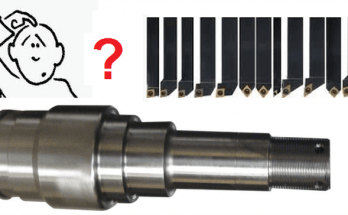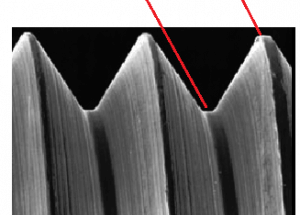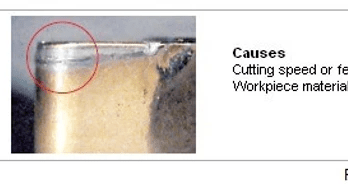Cutting tools: What is insert grade, and insert grade selection
Insert grade selection is important because there is no one ‘carbide’. There are carbides and carbides and carbides and…
Metal cutting is merely a controlled scratching of one material by another. The harder material scratches the softer one. Scratch hardness is defined on the Mohs’ scale of hardness (developed by Frederich Mohs, a German geologist, in 1822), on which Talc is 1 and Diamond is 10. Mild steel is 5 and glass is 7. Tungsten Carbide is 8.
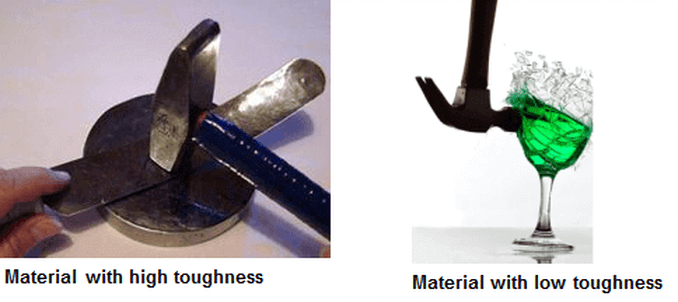
The three key qualities of a tool material are Hardness, Toughness and Wear resistance. Toughness is the ability of the material to withstand interrupted cuts. A tool requires higher hardness to cut a harder work piece material, but requires higher toughness to withstand interrupted cuts. Unfortunately, some of the materials with the highest Mohs hardness are also the ones with least toughness. Tungsten Carbide, Ceramic and Diamond are all very hard but have very low toughness.
A tungsten carbide insert actually consists of hard tungsten carbide particles bound together by a soft cobalt binder. Want more toughness ? Increase the binder and reduce the carbide. Want more hardness ? Decrease the binder and increase the carbide. Insert material design is actually a balancing act between hardness and toughness, and a cutting tool manufacturer has a different grade of carbide for each application. An application is defined by a combination of these:
1. Work piece material
2. Type of operation – face milling / turning / threading, etc.
3. Amount of material removed – roughing / medium machining / finishing
4. Rigidity of workpiece holding – overhang, vibrations, etc.
5. Extent of interrupted cutting
An insert’s material, or grade, is designed to suit a particular machining application, and even though two inserts may look the same, the base material and the coating (if there’s one) can be very different. The tendency on a lot of shop floors is however to think of ‘carbide’ as a single tool material, use whatever insert is on hand in the shop, and then blame the tool manufacturer for poor tool life and high tool cost.
Action point
Study the tool manufacturer’s catalog and do insert grade selection seriously, based on the application. Doing this can make a big difference to your shop’s profitability in CNC turning and CNC milling.
Text source: CADEM NCyclopedia multimedia CNC training software.

A (synthetic) gem of a story
Speaking of cutting tools, here’s an interesting little story about my visit to a customer of ours that makes synthetic diamonds, used in cutting tools. I was visiting a De Beers synthetic diamond plant in Johannesburg, South Africa, with our South African reseller. De Beers is the world’s largest diamond producer, both mined and synthetic. Diamonds in this plant are made by pressing a carbon source in dies under very high pressure and temperature, and the die parts are turned using our CAPSturn software.
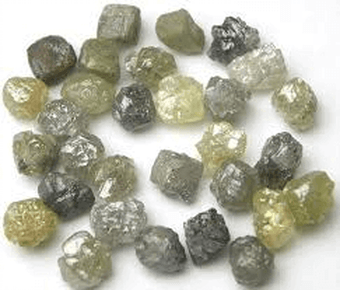
After our plant visit, on our way out we passed through an X-ray screening machine to check if we were smuggling out some diamonds in our bodies. The security guy told me an interesting story about how they started screening people. There was a guy who regularly walked out with diamonds in a pouch in his rectum. One fine day he split up with his wife, and the wife shortly took revenge on him by telling the company that he was stealing diamonds, with details of his modus operandi. The guy was caught red-handed (or is that red-rectumed ?) soon after, taken to the toilet and made to expel the diamonds. The screening became a regular thing after that.
I couldn’t get a picture of a pouch of diamonds in a rectum, but here’s an X-ray of a cell phone in the same location, that I got off the internet. I guess this conveys the idea.
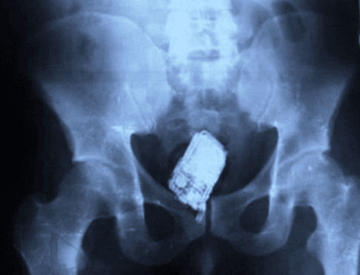
And yes, I got the same doubt as you: What was a cell phone doing there, so far away from the guy’s ear ?
